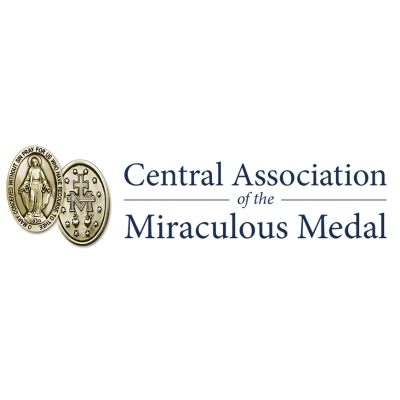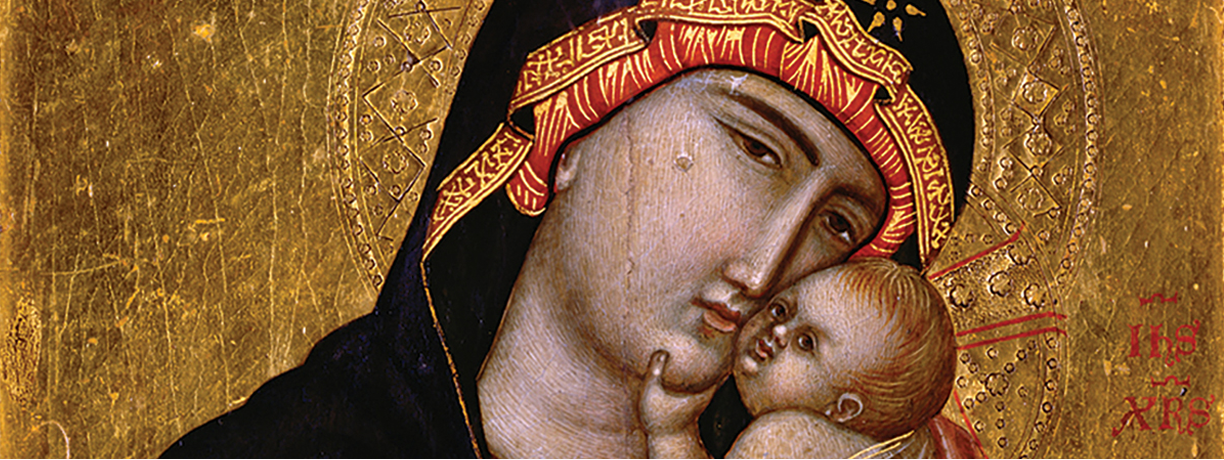Our Lady of Grace
Our Lady of Grace
Veneration to Mary under the title of “the Miraculous Medal” started in 1830 when she appeared to St. Catherine Labouré. But, did you know that the image of Our Lady on the front of the Medal is referred to as “Our Lady of Grace?” Or that it dates to the twelfth century? Were you aware that there are three distinct images and one statue of Our Lady of Grace?
Images of Our Lady of Grace are located in Ipswich (England), Cambrai (France), Vienna (Austria) and on the Miraculous Medal. While the images are centuries old, this Marian title dates to Luke 1:28, where the Angel Gabriel addresses Mary as kecharitomene, which means “full of grace.”
Come on a journey that begins in twelfth-century England to discover “Our Lady of Grace.”
 OUR LADY OF GRACE, IPSWICH, ENGLAND
OUR LADY OF GRACE, IPSWICH, ENGLAND
The earliest historic records mention a shrine to Our Lady of Grace in Ipswich, England, in 1152. Nearly 150 years later, the daughter of King Edward I was either married at the shrine or visited it with her husband. It wasn’t until the fourteenth century that a miraculous statue was discovered; shortly afterward, the shrine became so popular only Our Lady of Walsingham could claim more pilgrims.
In 1516, St. Thomas More wrote about the miraculous healing of a 12-year-old girl in front of the statue. Between 1517 and 1522, King Henry VIII and Catherine of Aragon both visited the shrine (although separately). Sadly, along with the Reformation, King Henry VIII suppressed Catholic churches, shrines, and monasteries and ordered Our Lady of Grace to be burned. There is evidence that Catholic sailors rescued the statue and brought it to Nettuno, Italy, where it still remains. In fact, St. Maria Goretti is believed to have frequently prayed in front of the Nostra Signora delle Grazie statue.
OUR LADY OF GRACE, CAMBRAI, FRANCE
In Cambrai, France, there is an icon of Our Lady of Grace (Notre Dame de Grâce) that is not only considered miraculous, but also reportedly painted by St. Luke. Because of that, this icon is classified as a relic, and when it was brought from Rome in 1450, it was ceremoniously placed in the Cambrai Cathedral. Three years later, a confraternity was created to care for it, which was carried in a procession on the Feast of the Assumption. Twenty-two years later, Bishop of Arras dedicated a statue of Our Lady of Grace.
Almost 360 years before Our Lady appeared to St. Catherine Labouré, this statue depicts Mary as she appeared in the second vision (November 1830), standing on a globe with her arms extended and hands pointing down to shower her children with grace.
OUR LADY OF GRACE, VIENNA, AUSTRIA
Another icon of Our Lady of Grace (also known as “Our Lady of the Bowed Head”) is situated in the Carmelite Monastery in Vienna, Austria. This Marian image is reported to have been discovered by a Carmelite friar, Fr. Dominic of Jesus-Mary, in Rome. Some stories say he discovered it within a pile of garbage; others say he discovered it amongst the belongings of an old altar.
In all accounts, the records indicate that after he cleaned the painting, brought it into the monastery, and prayed before it, Mary smiled, bowed her head, and spoke to him. He asked her to deliver one of his benefactors from Purgatory, which she did—and later appeared to Fr. Dominic with the soul of the man who was now in heaven. She then told him that everyone who asks for her protection and honors this image will receive answers to their prayers, especially those offered for the Holy Souls in Purgatory, and will also be granted many graces. The painting was later brought to the Carmelite monastery chapel in Vienna, where it is still venerated.
OUR LADY OF GRACE, MIRACULOUS MEDAL
Of course, the Miraculous Medal that Mary commissioned St. Catherine Labouré to make also depicts Our Lady of Grace. In some ways, this image, the last chronological image, is a culmination of the others. Like all images of Our Lady of Grace, it’s a miraculous one that showers grace on those who love Mary and wear the Medal with confidence. Like the icons of Cambrai and Vienna, Mary’s head is bowed, depicting her humility. And, like the statues of Ipswich and Cambrai, Mary is shown having power and authority: The statue of Ipswich portrays Mary as a Queen, seated on a throne with her Divine Child on her lap. The statues of Cambrai and the Miraculous Medal portray Mary standing on a globe with her foot crushing a serpent and her hands stretching down to her earthly children. When Mary appeared to St. Catherine in November of 1830, not only were her arms outstretched, but there were also rays of light streaming from her hands. Like what she said in Vienna, Mary told Catherine that the light symbolizes the graces she grants to people who ask for them, particularly when they “wear the Medal around their neck with confidence.”
Most important, in all of the images of Our Lady of Grace, we see our Mother, who continues to come to us, care for us, and intercede on our behalf.



